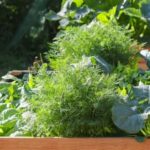Peat moss is a popular soil amendment that many gardeners swear by for its numerous benefits. One common question that arises among gardening enthusiasts is, “Is peat moss good for vegetable gardens?” The answer lies in understanding what peat moss is and how it can positively impact the growth of vegetables in your garden.
Peat moss, derived from partially decomposed organic matter found in bogs and wetlands, is known for its ability to retain moisture and improve soil structure. Its acidic nature makes it suitable for acid-loving plants like tomatoes and peppers. In vegetable gardening, peat moss plays a crucial role in creating optimal growing conditions for plants, promoting healthy root development, and enhancing overall crop yield.
By incorporating peat moss into your vegetable garden, you can expect improvements in soil quality and structure. Peat moss helps loosen compacted soil, allowing for better water drainage and air circulation around plant roots. Additionally, it aids in retaining moisture in the soil, reducing the frequency of watering needed for vegetables to thrive. With an increased capacity to hold onto nutrients, peat moss supports the healthy growth of vegetable plants throughout their life cycle.
Benefits of Using Peat Moss in Vegetable Gardens
Peat moss is a popular soil amendment that many gardeners swear by for their vegetable gardens. So, what exactly makes peat moss good for vegetable gardens? Let’s delve into the benefits of incorporating this organic material into your gardening routine:
- Improves Soil Structure: Peat moss has excellent moisture retention properties, making it ideal for improving soil structure in vegetable gardens. It helps create well-draining soil that allows roots to grow deeply and access nutrients more efficiently.
- Enhances Nutrient Absorption: The acidic nature of peat moss helps in breaking down organic matter in the soil, releasing essential nutrients that are then readily available to the vegetable plants. This can result in healthy and vigorous growth, leading to bountiful harvests.
- Promotes Root Growth: By creating a loose and aerated soil environment, peat moss encourages strong root development in vegetable plants. This, in turn, increases the plant’s ability to withstand environmental stresses and absorb water and nutrients effectively.
Moreover, peat moss acts as a natural pH buffer, helping to maintain the optimal pH level for most vegetables to thrive. Its ability to retain moisture also reduces the frequency of watering needed in vegetable gardens, especially during hot summer months. Additionally, peat moss is lightweight and easy to work with, making it a convenient choice for both novice and experienced gardeners alike when amending their soil.
How Peat Moss Improves Soil Quality and Structure
Peat moss is a versatile and beneficial organic material that plays a crucial role in improving soil quality and structure in vegetable gardens. One of the key ways in which peat moss enhances soil quality is by increasing its moisture retention capacity. This is particularly advantageous for vegetable plants, as they require consistent moisture levels to thrive. By incorporating peat moss into the soil, gardeners can create a more stable and balanced environment for their crops.
In addition to enhancing moisture retention, peat moss also helps improve the overall texture of the soil. Its fibrous nature aids in loosening compacted soils, allowing for better root penetration and air circulation. This improved soil structure promotes healthy root development in vegetable plants, leading to stronger growth and increased yields. Furthermore, peat moss has a slightly acidic pH, which can be beneficial for acid-loving vegetables such as tomatoes, peppers, and potatoes.
Moreover, peat moss is rich in organic matter, making it an excellent source of nutrients for vegetable plants. As peat moss breaks down over time, it releases essential elements like nitrogen, phosphorus, and potassium into the soil, providing a natural fertilization effect.
These nutrients are vital for supporting the growth and development of vegetables throughout their life cycle. By incorporating peat moss into their gardening practices, individuals can ensure that their vegetable plants have access to the nourishment they need to thrive.
| Benefit | Details |
|---|---|
| Improves Soil Quality | Enhances moisture retention and promotes balanced environment |
| Enhances Soil Structure | Loosens compacted soils for better root penetration |
| Provides Nutrients | Rich in essential elements like nitrogen, phosphorus, and potassium |
Nutrients in Peat Moss That Benefit Vegetable Plants
Peat moss, a common soil amendment used in gardening, is known for its ability to improve soil quality and structure. But what exactly makes peat moss beneficial for vegetable plants? Let’s dive into the nutrients found in peat moss that contribute to the growth and health of vegetables:
- Organic Matter: Peat moss is rich in organic matter, which helps improve the soil’s ability to retain moisture and nutrients. This is especially important for vegetable plants, as they require consistent moisture levels to thrive.
- Acidity: One of the key benefits of peat moss is its acidic nature. Many vegetable plants prefer slightly acidic soil conditions, making peat moss an ideal addition for crops like tomatoes, peppers, and potatoes.
- Microbial Activity: Peat moss contains beneficial microbes that help break down organic matter and release nutrients in a form that vegetable plants can easily absorb. This promotes overall plant growth and health.
Incorporating peat moss into your vegetable garden can provide essential nutrients that support the development of strong roots, healthy foliage, and fruitful harvests. Its unique composition offers various advantages that contribute to the success of growing a thriving vegetable garden.
- When mixing soil for your vegetable garden, consider combining equal parts peat moss with quality compost to create a nutrient-rich blend.
- Avoid using excessive amounts of peat moss, as it can lead to overly acidic conditions in the soil. A good rule of thumb is to use no more than one-third peat moss in your soil mixture.
- Regularly monitor the pH levels of your soil when using peat moss to ensure it remains within the optimal range for vegetable growth. Adjustments may be necessary over time to maintain balanced acidity.
By understanding the nutrients present in peat moss and how they benefit vegetable plants, you can make informed decisions on incorporating this versatile soil amendment into your gardening practices. Proper usage of peat moss can lead to healthier vegetables, improved yields, and a flourishing garden overall.
Best Practices for Incorporating Peat Moss Into a Vegetable Garden
Peat moss is a popular soil amendment that can greatly benefit vegetable gardens. When used correctly, peat moss can improve soil quality, provide essential nutrients, and promote healthy plant growth. One of the key benefits of using peat moss in vegetable gardens is its ability to retain moisture while still allowing for proper drainage. This is especially important for vegetables that require consistent watering to thrive.
Incorporating peat moss into a vegetable garden is relatively easy and can be done at various stages of garden development. Before planting, you can mix peat moss into the soil to improve texture and aeration. During the growing season, top-dressing with peat moss can help retain moisture and suppress weed growth. Additionally, peat moss can be used as a component in potting mixes for container gardening, providing the necessary structure and nutrients for vegetables to grow.
When incorporating peat moss into your vegetable garden, it is important to consider its acidity level. Peat moss tends to be slightly acidic, so you may need to monitor pH levels and adjust accordingly by adding lime if needed.
Additionally, while peat moss is an excellent soil conditioner, it does not provide all the necessary nutrients for plants on its own. Therefore, it is recommended to supplement with organic fertilizers or compost to ensure your vegetable plants receive adequate nutrition for optimal growth.
| Benefit | Details |
|---|---|
| Improves Soil Quality | Peat moss helps loosen compacted soil and promotes root development. |
| Retains Moisture | Helps keep the soil moist without causing waterlogged conditions. |
| Enhances Nutrient Retention | Keeps essential nutrients within reach of plant roots for better absorption. |
Potential Drawbacks of Using Peat Moss and How to Mitigate Them
Peat moss is a popular soil amendment used in vegetable gardens due to its ability to improve soil quality and structure. However, there are some potential drawbacks that gardeners should be aware of when using peat moss.
Acidic Nature
One potential drawback of using peat moss is its acidic nature. Peat moss has a low pH level, which can be detrimental to certain plants, especially those that prefer neutral or alkaline soils. To mitigate this issue, gardeners can add lime to the soil to raise the pH level and counteract the acidity of the peat moss. It’s important to test the soil regularly to monitor the pH levels and make adjustments as needed.
Compaction
Another drawback of using peat moss is its tendency to compact over time, leading to poor drainage and reduced oxygen flow in the soil. To prevent compaction, gardeners should incorporate other organic matter such as compost or aged manure along with the peat moss. This will help maintain good soil structure and prevent excessive compaction.
Environmental Concerns
Peat moss is obtained from harvesting peat bogs, which are unique ecosystems that play a vital role in carbon storage and biodiversity. Harvesting peat moss can have negative environmental impacts, including habitat destruction and carbon emissions.
To mitigate these concerns, gardeners can look for sustainably sourced peat moss or consider alternative soil amendments such as coconut coir or compost. By being mindful of where their peat moss comes from, gardeners can help reduce the environmental impact associated with its use in vegetable gardens.
Overall, while there are some potential drawbacks to using peat moss in vegetable gardens, by taking steps to mitigate these issues through proper management practices and considering alternative options when necessary, gardeners can still harness the benefits of peat moss for improving soil quality and promoting healthy vegetable growth.
Comparing Peat Moss to Other Soil Amendments for Vegetable Gardens
When it comes to choosing soil amendments for vegetable gardens, peat moss is often compared to other options like compost, vermiculite, and perlite. Each of these amendments offers unique benefits and considerations for gardeners looking to improve their soil quality.
Compost is a popular choice for vegetable gardens as it adds organic matter, nutrients, and beneficial microbes to the soil. While compost can improve soil structure and fertility over time, peat moss is particularly effective at improving drainage in heavy clay soils. Peat moss also has a high water-holding capacity, making it a good choice for sandy soils that drain too quickly.
Vermiculite and perlite are commonly used to improve soil aeration and drainage in gardens. While both can be valuable additions to vegetable gardens, they do not offer the same organic matter content or long-term benefits as peat moss.
Peat moss provides a slow-release source of nutrients for plants while also helping to maintain moisture levels in the soil, which can be particularly beneficial during hot summer months or periods of drought. Ultimately, the choice between peat moss and other soil amendments will depend on the specific needs of your garden and the existing soil conditions.
Expert Tips and Recommendations for Maximizing the Benefits of Peat Moss in Vegetable Gardening
How to Maximize the Benefits of Peat Moss
To get the most out of using peat moss in your vegetable garden, it is essential to follow some expert tips and recommendations. One key aspect is to properly prepare the soil before incorporating peat moss. This can be done by adding compost or other organic matter to ensure a good balance of nutrients. Mixing peat moss with these materials will enhance its effectiveness in improving soil structure and water retention.
Another tip is to perform regular soil testing throughout the growing season. By monitoring the pH levels and nutrient content of the soil, you can make adjustments as needed to optimize plant growth. Peat moss can help maintain a slightly acidic pH level, which is beneficial for many vegetable crops. Additionally, watering techniques should be adjusted when using peat moss since it has high water retention capacity.
Avoiding Common Pitfalls
While peat moss offers numerous benefits for vegetable gardens, there are some potential drawbacks that gardeners should be aware of. One concern is the environmental impact of harvesting peat moss. To mitigate this issue, consider using alternative sustainable sources or limit the amount of peat moss used in your garden. Over-reliance on peat moss can also lead to soil compaction over time, so it’s important to rotate different soil amendments periodically.
Additionally, some vegetable plants may not thrive in environments with excessive moisture retention facilitated by peat moss. In such cases, it is recommended to mix vermiculite or perlite into the soil along with peat moss to improve drainage. Being mindful of these factors will help prevent potential problems associated with using peat moss in your vegetable garden.
Enhancing Peat Moss Benefits With Companion Planting
A clever way to amplify the benefits of peat moss in your vegetable garden is through companion planting. Certain plant combinations can work together symbiotically, enhancing each other’s growth and resilience.
When incorporating peat moss into your planting beds, consider pairing crops that have compatible needs and offer natural pest control benefits to one another. This strategy can further boost the health and productivity of your vegetable garden while leveraging the positive effects of using peat moss as a soil conditioner.
Real-Life Success Stories of Vegetable Gardens Using Peat Moss
In conclusion, peat moss has proven to be a valuable addition to vegetable gardens, as evidenced by numerous success stories from gardeners around the world. The benefits of using peat moss in vegetable gardening are undeniable, with its ability to improve soil quality, structure, and provide essential nutrients to plants. By incorporating peat moss into their gardening practices, many individuals have seen significant improvements in their vegetable yields and overall plant health.
One of the key advantages of using peat moss is its ability to retain moisture in the soil, which is especially beneficial for vegetables that require consistent watering. Additionally, the acidic nature of peat moss can help balance the pH level of the soil, creating an optimal environment for vegetable plants to thrive. Many gardeners have reported healthier and more vigorous crops after implementing peat moss into their gardening routines.
While there may be some potential drawbacks to using peat moss, such as its non-renewable nature and environmental impact during harvesting, these can be mitigated by choosing sustainably sourced alternatives or supplementing with other organic materials. Ultimately, when used responsibly and in conjunction with good gardening practices, peat moss can greatly benefit vegetable gardens and contribute to successful harvests year after year. So yes, indeed – peat moss is good for vegetable gardens.
Frequently Asked Questions
What Vegetable Plants Do Not Like Peat Moss?
Some vegetable plants do not thrive in peat moss due to its acidic nature, such as potatoes, carrots, and beets. These plants prefer a more neutral pH level for optimal growth and development.
Is Peat Moss Good for Tomatoes?
Peat moss can be beneficial for tomato plants when used in moderation. It helps retain moisture, improve soil structure, and provide some nutrients. However, excessive use can make the soil too acidic for tomatoes to thrive.
Can You Mix Peat Moss With Garden Soil?
Mixing peat moss with garden soil is a common practice to improve soil quality. It helps loosen compacted soil, retain moisture, and enhance aeration. However, it’s important to balance the amount of peat moss added to avoid making the soil too acidic over time.

If you’re looking to get into vegetable gardening, or are just looking for some tips on how to make your current garden better, then you’ve come to the right place! My name is Ethel and I have been gardening for years. In this blog, I’m going to share with you some of my best tips on how to create a successful vegetable garden.





